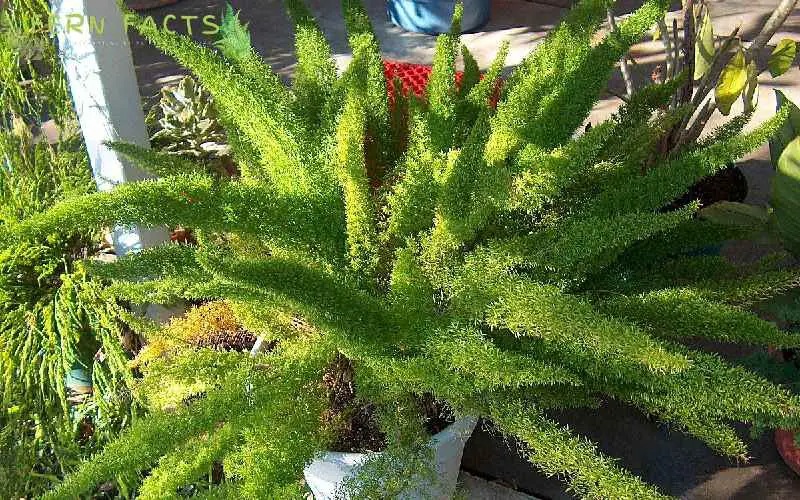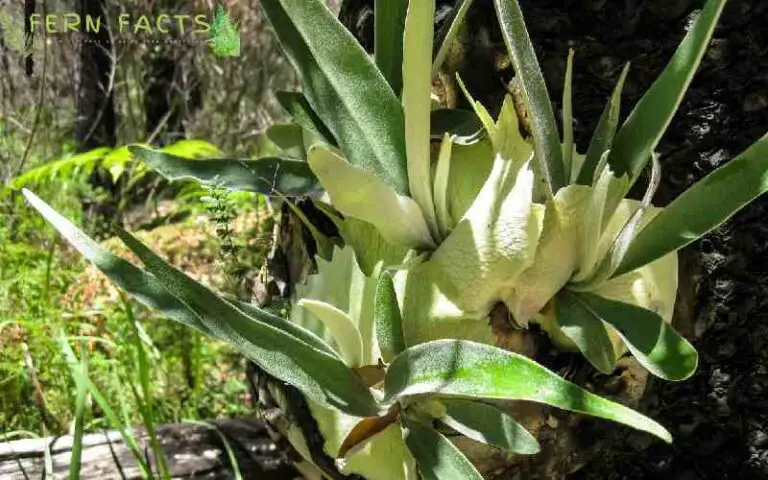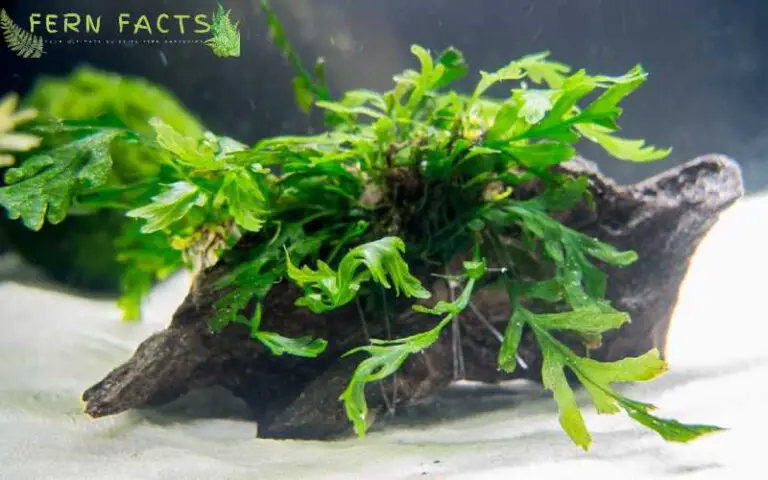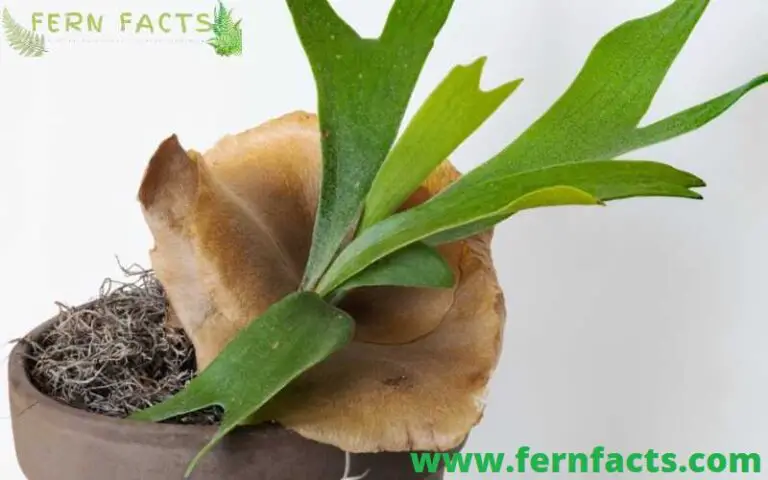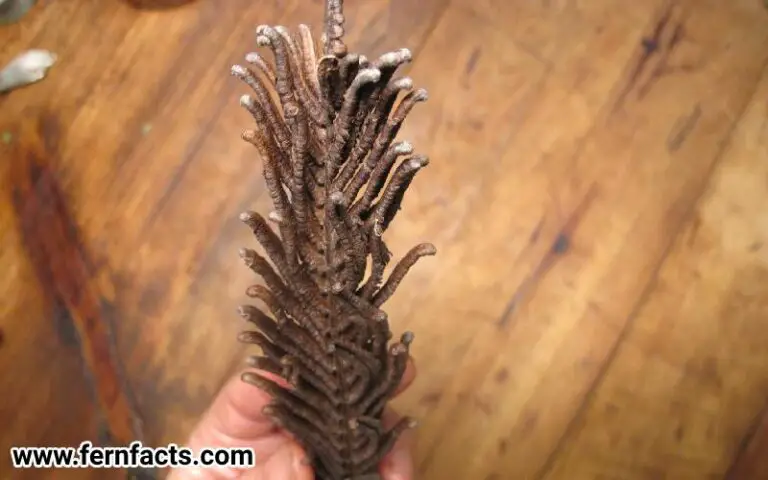How to Make Asparagus Fern Bushy
If you have asparagus ferns, then this article will give you tips and tricks to make your asparagus more bushy and dense which will give your garden a ravishing look.
In this article, I will anticipate how you can make your beautiful asparagus ferns bushier and thicker while giving you some guidelines and tips like pruning techniques, sufficient fertilizer, and repotting.
By following these tips step by step you can make your ferns more bushy and dense. So let’s get into the details.
Overview of Asparagus Fern
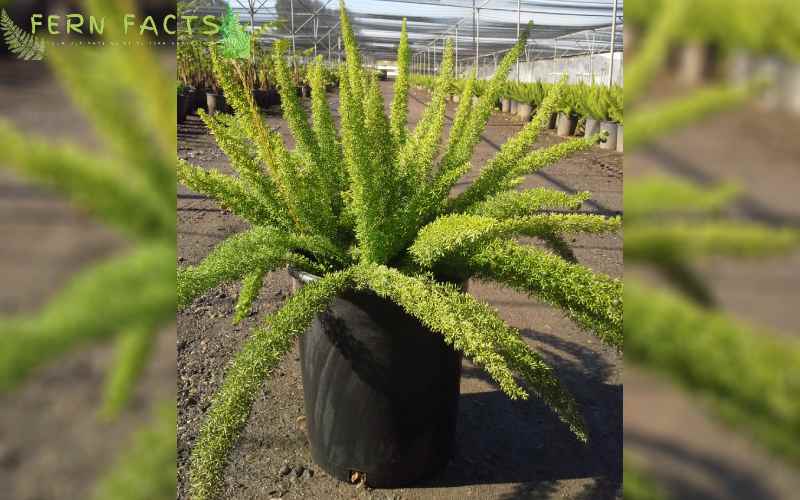
- Botanical name: Asparagus aethiopicus
- Common name: Asparagus ferns
- Plants: evergreen perennial
- Native range: Southern Africa
- Native habitats: subtropical areas like rainfall
- Shade requirements: partial, fully shaded, bright place
- Height: around 3 feet tall and 4 feet wide
- Soil: slightly acidic (6.5 – 6.8), well-drained system
Asparagus ferns are one of the ferns which has bright green textured foliage of different varieties. Though they are not true ferns, their fronds resemble one of them.
These ferns produce small flowers which generally come through berries. These berries are slightly toxic to both humans and animals, especially dogs and cats.
They are also known for their invasive growth and spreading characteristics.
Tips for Pruning an Asparagus Fern to Have Bushier Growth
Asparagus ferns are the most lovable ferns for plant enthusiasts and gardeners as indoor and outdoor plants.
They are most common in tropical and subtropical areas where they thrive with hardiness and unique looks. If you want to have asparagus ferns with bushy growth you need to know some tips and tricks.
By using those trips and tricks you can have bushy asparagus fern in your house.
Step-1 Pruning Time
Before pruning your ferns, you need to know the exact time when to prune. Usually, asparagus ferns can be pruned throughout the year but the peak time of their pruning is in the spring seasons or in the early summer seasons.
This is the time when asparagus ferns’ growth increases or you can say it’s their growing season asparagus ferns need more care.
Therefore, by removing their dead fronds you can enhance their growth level and get healthy bushy ferns.
Step-2 Tool Prepare
Similarly, you also need to have all the pruning tools and equipment so that you can prune well. Besides, you need to clean and sharpen all your pruning tools to get rid of any dirt and bacteria on them.
Because dirt and bacteria might infect your ferns and lead them to various diseases as well. You can also soak your pruning tools in alcohol-water or use any disinfectant wipes before using them.
Step-3 Identifying the Stems of Ferns
In order to prune, you need to Identify your fern stems first. To do that, you can observe your asparagus fern and pick the old and damaged stems.
Mostly, old and damaged stems are short leggy, and less vibrant than the healthy ones. If you have older ferns then you may need to prune it back in order to have the right shapes and sizes.
Step-4 Pruning the Stems
After identifying the stem, it’s now turn to prune your ferns. You can snip or cut off the old and damaged stems by using your pruning tools, and shears.
You can cut the base of their stem or nod and try to avoid cutting healthy stems. It may affect their growing process or it might harm the plants. If your plant’s stems are longer, then you can cut or trim them little by little.
Step-5 Cleaning Up
After finishing your pruning you need to clean up all the dead stems and fronds that fall on the ground or on the soil.
These dead leaves and stems might attract bacteria, and pests near your ferns or might harm the growth as well.
While following these steps by steps you can enhance your asparagus ferns’ growth and have healthy bushy ferns gradually.
Sufficient Fertilizer to Contribute Their Growth
For having bushy and fluffy growth of your asparagus ferns, you need to choose the right fertilizer for them.
Choosing the right fertilizer is also an essential element to have the enormous growth of your ferns. At first, you need to understand what nutrition asparagus ferns need and require to have growth.
To contribute to their soil texture and growth, these ferns are fond of balanced nutrition like nitrogen, phosphorus, and potassium.
Nitrogen boosts up their leaf or frond growth, phosphorus contributes to their root development and potassium strengthens their overall health and protects them from any kind of diseases.
Slow-release Fertilizer
Asparagus ferns are fond of slow-release fertilizer which releases nutrients gradually over the period. This type of fertilizer gives long-term benefits to their soil.
You can give fertilizer with a nitrogen(N): phosphorus(P): potassium(K) ratio like NPK- 10:10:10 or 12:12:12 to make their soil rich and healthier which will ultimately benefit their growth level.
Liquid Fertilizer
Another way to make your fern bushier is by using liquid fertilizer. These types of fertilizer provide more nutrients to the soil very rapidly.
You can give liquid fertilizer during their growing seasons which are spring and summer. And so, you can provide fertilizer every two weeks during their growing seasons which will help your ferns to boost.
In this process, you can use all those nutrients with an NPK ratio of 20:20:20 or 15:30:15 in your asparagus ferns. It will help your ferns to blossom and grow gradually bushier and fluffier.
Organic Fertilizer
Asparagus is also well-adaptable with organic matter and fertilizer. In case of budget issues, you can also make organic fertilizer with compost and worm casts.
This type of organic fertilizer also works in a slow process which gives them long-term benefits inside of their soil.
You can provide a thin layer of compost and worms on the top of the soil surface which will also work as a good nutrient for them.
Follow the Instructions
Try to follow the instructions of the fertilizer package. Try not to over-fertilize or less fertilizer than it requires.
It might harm the plants. Also, water your plants thoroughly before and after giving them fertilizer so that all the fertilizer can mix up with the soil properly.
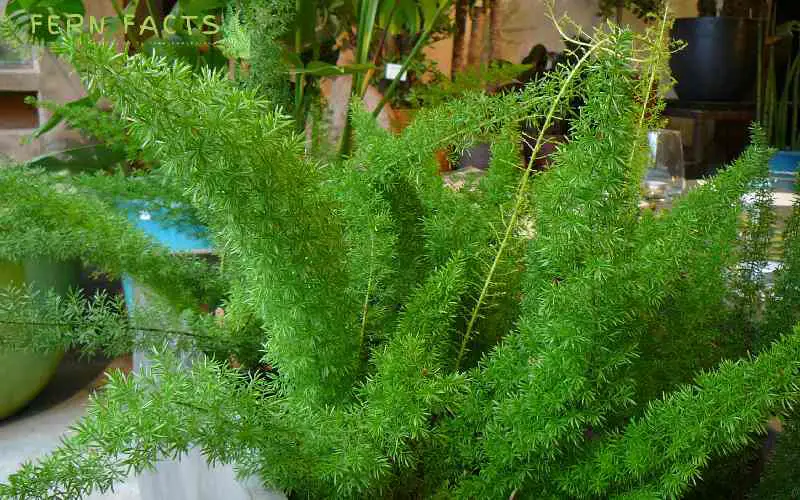
Repotting Your Ferns
Reporting or replanting also helps the growth of the asparagus ferns in a subtle way. If you observe your ferns roost become root-bound that means you need to change the pot or container of your ferns.
When ferns become root bound their roots are unable to stay because of extra growth in the pot. And so, they are unable to absorb all the nutrients and water.
That’s why you need to re-pot your ferns as soon as possible. Otherwise, their growth will be harmed.
For repotting your ferns, you need to choose the right pot. Therefore, you need to choose a slightly bigger pot than the previous one which will give abundant space to grow and spread.
Then you need to mix the soil with rich nutrients. Try to make the soil acidic with a proper drainage system. A perfect mixture of soil consists of soil, sand, perlite, and compost.
After mixing the soil, gently remove your plants without harming the roots and place the water into the new container. Before replanting, you can remove or prune the roots if it’s necessary.
After replanting the plants, you have to water them thoroughly so that the soil gets enough hydration and moisture.
Learn About Another Species of Asparagus Fern: Foxtail Asparagus Ferns All Information and Care.
Trimming Your Asparagus Ferns
Good trimming can also make a positive impact on ferns’ growth. That is why, by trimming your Asparagus ferns roots you can strengthen their growth level gradually.
As their roots are the sources of nutrients and hydration to the upper parts of the plants, that is why if you trim the roots properly, it will increase their growth by giving you healthy and bushy ferns.
For trimming the roots, you need to choose the best time such as their growing season (spring and summer). It will boost their growth phase.
Before trimming, you need to water your plants thoroughly which will make it easier to detach the plants from the roots. Then remove the plants from the container when the soil is still moist.
Try to avoid damaging the roots when you are removing the plants. You may need to loosen the soil from the edges, from the side, and take the whole roots part.
Then you can use any sharp scissors to remove dead roots and fronds. After trimming, you can replant your ferns in a new pot.
Know About Asparagus Ferns Another Subspecies: Asparagus Ming Fern
Final Observation
In final thought, asparagus ferns are one of the most demandable ferns among plant lovers and plant enthusiast people.
Besides, it also contributes to economic growth because of its enormous demand. Similarly, you can make your simple-looking asparagus ferns more bushy and dense by following the instructions in this article.
Proper pruning techniques, fertilizing, trimming, and repotting can boost your fern’s growth in your garden.

